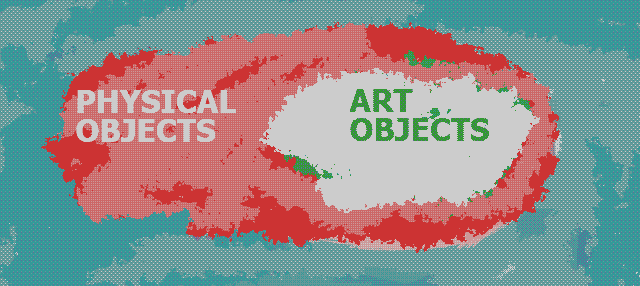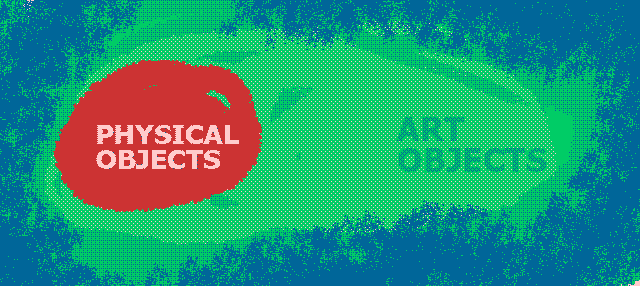That which is outside the norm only becomes revolutionary if enough important people are threatened by it, or if in itself it changes something. Since art doesn’t really do “real” these days, the former criteria is most often in evidence when discussing the rebellish of art. So if no-one cares about your molasses performance, it’s not necessarily bad, only non-threatening. So before we ask what art is in this day and age — and how it might become revolutionary — we ought to know whose definition we’re working with.
There’s no difference between an art thing and any other thing, only your added value of labour remains. And since traditional labour, with behaviours and signs particular to the artwork, has given way to labour which looks remarkably similar regardless of what you do (At a desk, before a conveyor belt, fiddling with bits and bytes) how do you value your labour as an artist? There is only performance left, regardless of what you do; Art objects left as droppings are useful only as proof of a presence — as long as an animal shits, at least we know it’s alive, sort of. Whenever you pull the squeegee across silkscreen you create value, often regardless of the outcome as long as you’re able to properly frame what you’ve done and why.

In an e-flux editorial, we read about the art world:
In essence, these attempts mistook the art establishment for being in the business of producing an aura of authenticity, when in fact the real commodity has always been this attention itself, the care and custodianship bestowed upon objects by this system.
Sven Lütticken continues, in the same issue of e-flux in Art and Thingness, Part One: Breton’s Ball and Duchamp’s Carrot with tracing our relationship to the art object from modernism to today:
While many surrealist objects emphasize that they “function symbolically,” the readymades do not. In this, ironically, they foreshadow in their own way the future of the commodity, in an archaic guise: they announce the profusion of goods that are bought for their coded distinctiveness in the later twentieth and early twenty-first centuries. In the 1970s this becoming-sign of the object would lead Jean Baudrillard to diagnose fundamental changes in capitalism by supplementing the categories of use value and exchange value with his concept of sign value. […] This triumph of fetishism—of commodity fetishism as an active agent—results in object-signs that suppress most traces of their history, of their trajectories. Their lives seem to be lived in a realm of pure semiosis.


The article is a roundabout way of saying that branding is all there is, and that the value of the art brand is decided by a very small segment of the total market. An art value oligarchy.
The readymade bears no semblance of value from the original object. The conceptual work only bears the symbolic value of the material used. The post-modern infuses the banal with value, regardless of what the object is. In this last instance, when there’s nothing interesting left to say about the objects of art, only being an artist has value, and that is a buyers market where the threshold for newcomers is non-existent (Higher art education is a leaky levee, stemming the tide of people with ambition and time on their hands.)
So let’s just have fun. Lets exist on the margin between accepted society and the art world, and let’s not ask permission but rather forgiveness with our fingers crossed behind our backs. If we’re lucky we might just upset the right people.